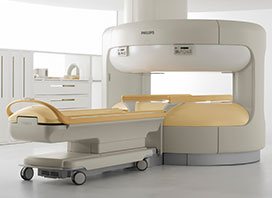SLEEP & SNORING DISORDERS DEPARTMENT

REA hospital’s Department of Sleep Disorders & Snoring aims at the study, diagnosis and treatment of sleep disorders and snoring-related conditions, such as obstructive sleep apnoea - hypopnoea.
The main cause of sleep disorders and snoring is the anatomical or functional obstruction of a part of the upper airway (nasal cavity, palate, tongue root, lateral pharyngeal walls and tonsils, supralaryngeal region).
REA Hospital’s Department of Sleep Disorders and Snoring performs a full range of diagnostic tests to plan an accurate, personalised treatment plan based on:
- Full ENT and buccofacial clinical examination
- Upper airway endoscopy
- Polysomnography
- Sleep endoscopy
Symptoms:
- Heavy snoring
- Daytime sleepiness
- Not feeling rested after sleeping
- Waking up frequently to urinate
- Dry mouth, bad smell in mouth and irritated throat when waking up
- Waking up suddenly feeling like choking - apnoea
- Morning headaches
- Behavioural disorders, depression
- Loss of memory and attention
- Increase blood pressure
- Erectile dysfunction and decreased libido
When is snoring not innocent?
Snoring may sound usual, but it is often not innocent. Usually it is the main reason behind sleeping but not feeling rested; it affects patients’ everyday life, quality of life, and health, while also decreasing productivity at work. Snoring is the sound created by the vibration of pharyngeal walls when making room for breathing. It affects even children and young adults and its frequency rises with age.
Snoring is not normal in any age. It hides dangers, as it is directly associated with obstructive sleep apnoea.
Throughout the world, obstructive sleep apnoea affects one billion people, with its main symptom being snoring.
What is obstructive sleep apnoea (OSA)?
OSA is a serious disease that is caused by complete or partial obstruction of the upper airway. It is characterised by repeated episodes of stopped breathing during sleeping (anpnoa), or episodes of shallow breathing associated with a reduction in oxygen saturation in blood. An episode of apnoea usually lasts for 10 seconds and is followed by noisy breathing or waking up. Persons with OSA rarely recognise this breathing difficulty; it is usually a situation described by their partners. Symptoms may be present for years or even decades without being realised, something which has important effects on health. Hypertension, heart disease, diabetes and cerebrovascular accidents are some of the most important harmful effects. Patients with OSA had almost four times the risk of having a stroke in comparison with healthy people of their age.
What is sleep endoscopy?
Assessment of obstructive sleep disorders is now possible by sleep endoscopy. It is an innovative examination, perfectly safe as it is performed in a hospital setting, following a standardised diagnostic protocol, in order to establish the exact anatomic region of upper airway obstruction. The specialised anaesthetist induces the patient to sleep be means of medication, mimicking natural sleep, and endoscopy is carried out by an ENT team to identify the site and mechanism of obstruction. Polysomnography is performed during endoscopy, which is factored in the examination. The treatment plan is tested (in vivo) for efficacy, by multiple approaches and the use of prostheses, thereby enabling accurate diagnosis and an ideal personalised treatment option. In this way, surgery is avoided,which would not solve the patient’s problem.
Indications:
- Failed attempts to use a CPAP mask
- Mild to moderate OSA
- Snoring
Advantages:
- Innovative method performed by a specialised team (anaesthetist, ENT surgeon, nursing stuff)
- Safety (examination performed in an operating theatre)
- Immediate examination (last for 2-3 hours in total)
- No general (full) anaesthesia; it only involves induced sleep
- No hospitalisation required
- Immediate and definitive diagnosis
- Personalised treatment proposed after the end of the test
Contraindications:
- Morbid obesity
- Severe OSA (AHI > 60 apnoea events/hour)


















